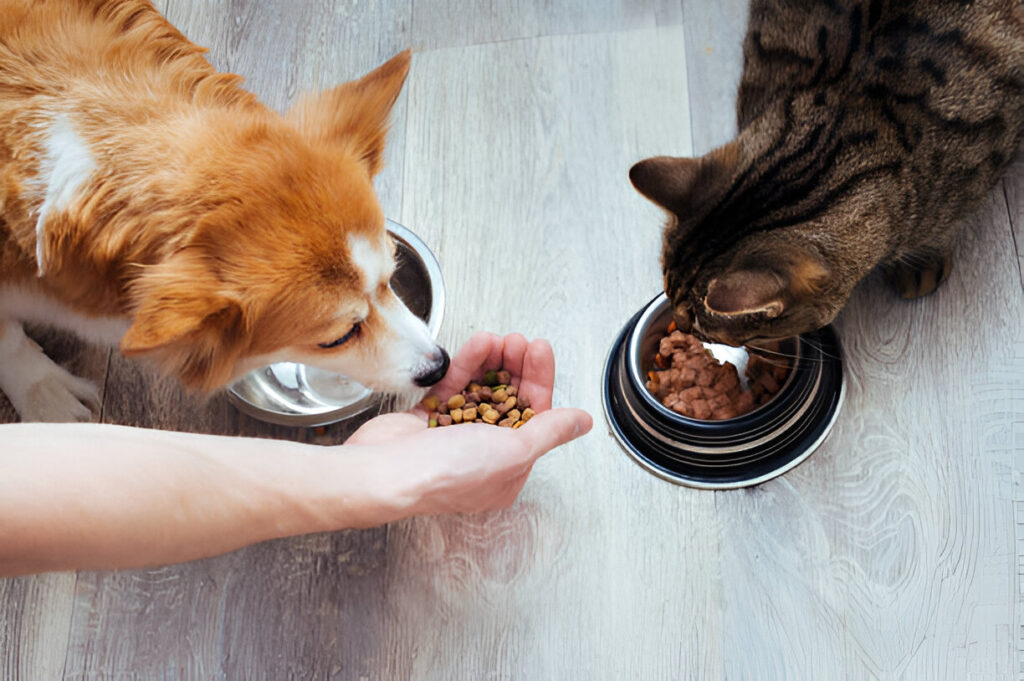Introduction
Proper nutrition is vital for your pet’s overall health and well-being. With so many options available on the market, it can be overwhelming for pet owners to determine the best diet for their furry friends. In this guide, we will break down the essentials of pet nutrition, helping you make informed choices that will keep your pets healthy and happy.
The Basics of Pet Nutrition
Essential Nutrients
- Proteins: Vital for growth, maintenance, and repair of tissues. Look for high-quality protein sources in your pet’s food, such as meat, fish, or eggs.
- Fats: Provide energy and support cell function. Omega-3 and Omega-6 fatty acids are particularly beneficial for skin and coat health.
- Carbohydrates: While not strictly necessary, they provide energy and can aid digestion. Choose whole grains and vegetables as sources of carbohydrates.
- Vitamins and Minerals: Essential for various bodily functions, including immune support and bone health. Ensure your pet’s food contains a balanced mix of vitamins and minerals.
Understanding Pet Food Labels
- Ingredients List: Ingredients are listed in order of weight. Look for whole foods as the first ingredient, such as meat or fish.
- Guaranteed Analysis: This section provides information on the food’s nutrient content, including protein, fat, fiber, and moisture levels.
- AAFCO Statement: Check for a statement from the Association of American Feed Control Officials (AAFCO) indicating that the food meets the nutritional standards for your pet’s life stage.
Choosing the Right Food for Your Pet
Dogs
- Life Stage: Puppies, adults, and senior dogs have different nutritional needs. Choose a food formulated for your dog’s specific life stage.
- Breed Size: Large and small breeds may require different nutrient profiles. For example, large breed puppies need controlled calcium and phosphorus levels to support healthy growth.
Cats
- High Protein Needs: Cats are obligate carnivores, meaning they require a diet high in animal protein. Look for foods that list meat as the primary ingredient.
- Taurine: This essential amino acid is crucial for heart and eye health. Ensure your cat’s food contains adequate taurine levels.
Feeding Practices
Portion Control
- Follow Guidelines: Use the feeding guidelines on the pet food packaging as a starting point. Adjust portions based on your pet’s age, weight, and activity level.
- Monitor Weight: Regularly check your pet’s weight and body condition score to ensure they are maintaining a healthy weight.
Feeding Schedule
- Dogs: Most adult dogs do well with two meals a day. Puppies may require three to four meals daily.
- Cats: Cats are natural grazers, so consider offering multiple small meals throughout the day or leaving dry food out for them to nibble on.
Special Dietary Needs
Allergies and Sensitivities
- Common Allergens: Be aware of common allergens, such as grains, beef, chicken, and dairy. If you suspect your pet has a food allergy, consult your veterinarian for guidance.
- Limited Ingredient Diets: These diets can help identify and manage food sensitivities by using fewer ingredients.
Health Conditions
- Weight Management: If your pet is overweight, consult your veterinarian for a weight management plan and appropriate food options.
- Specific Health Issues: Pets with conditions like diabetes, kidney disease, or allergies may require specialized diets. Always seek professional advice for tailored nutrition.
Conclusion
Understanding pet nutrition is crucial for providing your furry friends with a healthy and balanced diet. By choosing high-quality food, monitoring portion sizes, and being aware of your pet’s specific needs, you can ensure they lead a happy and healthy life. Always consult your veterinarian for personalized dietary recommendations, and remember that a well-fed pet is a happy pet!



